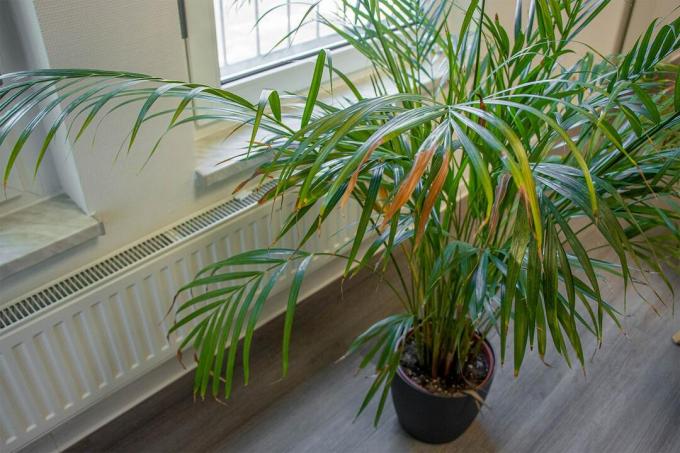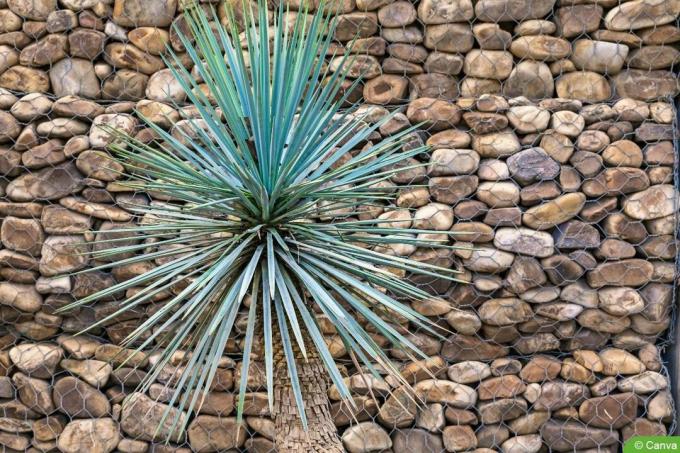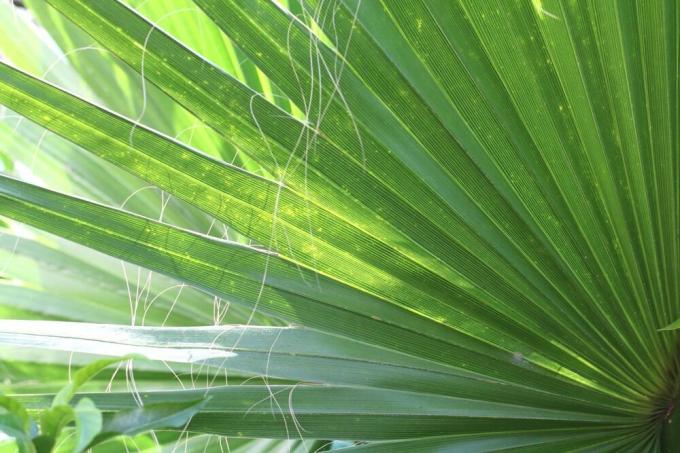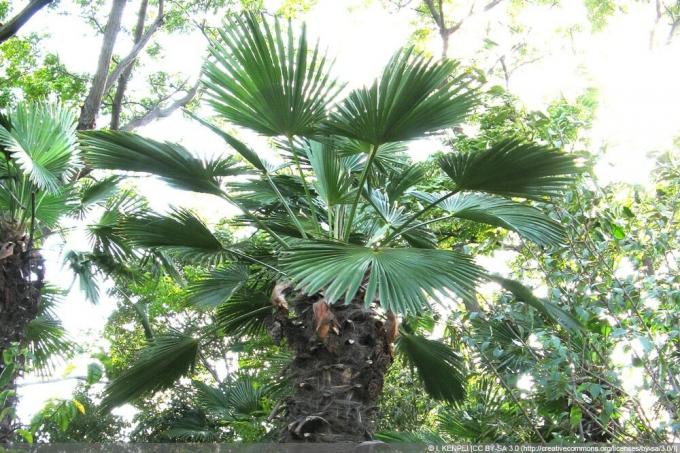

Table of contents
- Botanical classification
- Elephant foot is toxic to small children and pets
- Always place the elephant foot out of the reach of children and animals
- What are saponins?
- signs of poisoning
- First aid measures in case of poisoning
The elephant's foot (botanically Beaucarnea recurvata) is a succulent tree native to the tropical and arid forests of Mexico. Due to its whimsical appearance with the trunk only thickened at the base and the up to 180 centimeters long, thin and drooping leaves, it is one of the most popular indoor plants in Germany living rooms However, parents and pet owners should be careful, because the asparagus plant is poisonous.
Botanical classification
The German trivial name 'elephant foot' is used for two different, very similar plants: 'Beaucarnea recurvata' and 'Beaucarnea stricta'. The popular houseplant belongs to the asparagus family (Asparagaceae) and is distantly related to the palm lilies, which are also commonly cultivated in the home and garden. Sometimes the indoor tree is also referred to as a 'bottle tree', which can lead to a dangerous mix-up. In contrast to 'Beaucarnea recurvata', the Australian bottle tree or lucky tree (Brachychiton rupestris) is non-toxic.
Elephant foot is toxic to small children and pets
Due to the same trivial name, you should check thoroughly when buying which 'bottle tree' it is actually about. Since all parts of the elephant's foot contain saponins, these can lead to severe symptoms of poisoning if consumed by small children or pets. However, the plant is not considered to be highly poisonous, but it can cause extremely unpleasant symptoms in humans and animals - the smaller the child or animal, the more pronounced they are. the animal is. Adults would generally have to eat very large amounts of the plant to develop symptoms.
The elephant foot is poisonous for:
- babies and small children
- cats
- dogs
- budgerigars and other birds
- rabbits and guinea pigs
- as well as other pets (such as mice, rats or hamsters)
Always place the elephant foot out of the reach of children and animals

Among other things, the renowned institute for veterinary pharmacology and toxicology in Zurich and the no less respectable information center against poisoning at the University Hospital Bonn attest to the toxicity of the elephant's foot to children and pets and recommend placing the plant out of their reach. Both children and animals can be supervised 24 hours a day, but are happy to try some of the indoor plants out of curiosity in an unsupervised moment. For this reason, parents and pet owners should rather play it safe and either the Do without elephant foot as a room decoration or set it up in a location where there are neither children nor animals Have access.
What are saponins?
The toxicity of elephant's foot is caused by the saponins it contains, which are found in many plants as a natural fungicide and antibiotic. Legumes such as peas, asparagus and spinach contain saponins, but the highest concentrations are found in typical desert plants, including elephant's foot. In small doses, these plant compounds are used in medicine, but in higher concentrations they can cause inflammation or even damage tissue. They also have a haemolytic effect, i.e. they can dissolve the blood into its components and must therefore not get into the bloodstream under any circumstances.
Tip:
The blood-dissolving effect of saponins is especially important when you are on the sharp leaves of the elephant's foot - the wound should be cleaned thoroughly under running water immediately become. Otherwise, it can be difficult to ignite. When handling (e.g. pruning) the plant, it is also advisable to wear sturdy gloves.
signs of poisoning
If the child or pet has eaten something from elephant's foot - cats, for example, like to nibble on the tips of the leaves - then poisoning becomes noticeable through various symptoms. First of all, you feel unwell, perhaps combined with dizziness and nausea as well as a sudden tiredness. Abdominal pain, cramps and blurred vision are also typical. Later on, vomiting can occur, often with blood being spat out. If the sap comes into contact with the skin or open wounds, skin irritation and even purulent inflammation are possible.
First aid measures in case of poisoning
Never make the child or animal vomit, as this can only aggravate the symptoms of poisoning. Instead, the person affected should drink as much still water as possible to flush out the toxins. Do not give milk to drink: contrary to popular belief, it does not neutralize the poison. Keep calm and see a doctor. a veterinarian. If known, you can also contact the poison control center responsible for your area.
 Home editorial office
Home editorial office
Learn more about palm trees

Palm leaves hanging: save yucca & co
Palm trees give the home a southern flair. However, if Yucca & Co. let their leaves droop, their sight is rather desolate. The causes of hanging palm fronds vary. A rescue attempt is always worthwhile.

Blue palm lily, Yucca rostrata: 12 tips for care & Co.
The blue yucca (Yucca rostrata) is one of the most fascinating Yucca species. Since it hardly requires any care, it is also suitable for the office. Planted in the garden, it is considered hardy when it is dry.

Washington Palm: Care From A-Z | Overwinter Washingtonia robusta
The Washington palm is a decorative plant that can grow to an impressive size. Due to the lack of winter hardiness, the plant is usually kept indoors in this country. When it comes to care, the palm makes certain demands so that healthy development can occur.

Areca palm, Dypsis lutescens: basics of care
The Areca Palm is a beautiful plant for indoor greenery. When it comes to care and location, the palm has certain requirements, if these are met, the plant will thrive. In order for the plant to grow constantly green, it needs the right lighting conditions.

Wagner's hemp palm, Trachycarpus wagnerianus: Care from A-Z
If you want exotic flair in your garden or on your terrace, you can't avoid Wagner's hemp palm. No wonder: the extremely decorative umbrella palm not only looks impressive, but is also very robust. More about this is here.

Candle palm lily, Yucca Gloriosa – Care from A-Z | Is she hardy?
A yucca is better known to most as an exotic houseplant, the candle palm lily (bot. Yucca gloriosa) is also ideal as an outdoor plant, bringing a touch of tropical flair to your garden.



